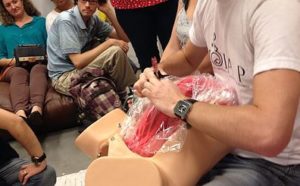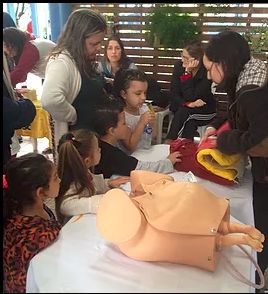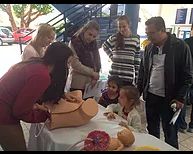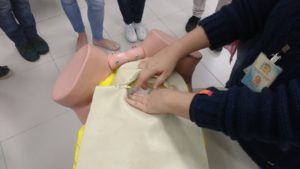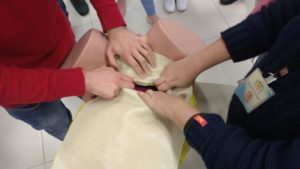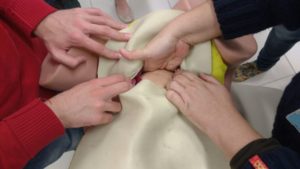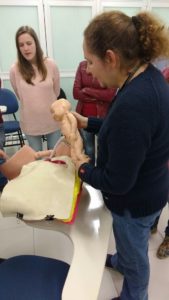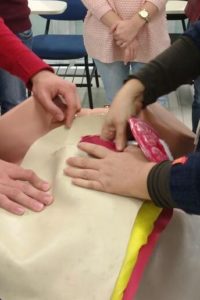Cesarean Surgery – Anatomical Layers
Cesarean section is probably the most performed surgery in the world. And certainly the most common surgical procedure in Brazil.
Knowing the anatomical layers of surgery is essential for doctors and nurses. It is also important that the population is informed about the complexity of the procedure and possible complications.
The goals of this project are:
- For the general population – to show that cesarean section is a medium complexity surgery and that it is necessary to “cut” seven anatomical layers to reach the fetus and placenta.
- For healthcare students – learn the anatomical layers of cesarean surgery, discuss possible complications at each stage of the surgery.
Scholarship students from the HORA P extension project were asked to create ways to show the anatomical layers of cesarean surgery to the population.
Results:
- Creating an animated video: the 7 layers
- Creation of a model with different materials, which is used in an obstetric pelvis mannequin.
 This work is licensed under a License Creative Commons – Atribuição-CompartilhaIgual 4.0 Internacional.
This work is licensed under a License Creative Commons – Atribuição-CompartilhaIgual 4.0 Internacional.
This Mannequin allows “simulation” of vaginal delivery and cesarean section and is used in groups and lectures for pregnant women and the community, and workshops for undergraduate health students, simulating the procedure.
- camadas de cesariana
- Feira de saúde em escolas – cesárea
- Feira de saúde em escolas – parto
See the model in action:

Workshop for health students, UFSC, 2017
- Abertura da pele
- Afastamento Músculos reto abdominais
- Posicionamento do polo cefálico
- Extração fetal completa
- Dequitação dirigida – extração placentária
After the placenta is removed, all layers are closed. The design of the activity is for laypeople and academics in the early stages.
The challenge is to think of a model that allows you to actually suture some structures!
Have you made this model or similar?
This work is licensed under a Creative Commons – Attribution-ShareAlike 4.0 International License.





